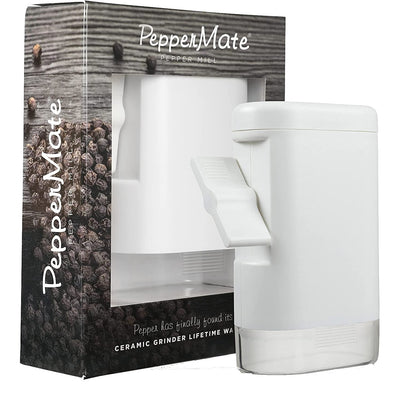History and Tradition Behind Herbs De Provence Spice

Herbs de Provence spice blend, with its aromatic bouquet of thyme, rosemary, basil, and other herbs, encapsulates the essence of the Provencal landscape and its culinary tradition. Originating from the southeastern region of France, this blend not only carries the flavors of Provence but also its history and cultural significance.
Traditional ingredients, often dictated by seasonal availability and regional preferences, have evolved, leading to the diverse variations of the blend we see today. This evolution reflects broader changes in culinary practices and the global spread of the blend, highlighting its adaptability and enduring popularity.
To deepen your understanding of this quintessential French spice blend, explore What is Herbs de Provence, a detailed guide that unveils its rich history and unique composition. For culinary enthusiasts eager to incorporate this blend into their cooking, the Top Ten Recipes That Use Herbs de Provence offers a treasure trove of dishes to elevate your meals with the flavors of the French countryside. Additionally, broaden your spice horizons by browsing the Ultimate List of Spices and Herbs, a comprehensive resource for aspiring chefs. To master the art of using this blend, don't miss How to Use Herbs de Provence, providing practical tips and creative ways to infuse your cooking with its aromatic richness.
In a Nutshell
- Herbs de Provence originated in southeastern France and reflect Provencal cuisine, evolving and influenced by local tastes and herb availability.
- The traditional ingredients in Herbs de Provence include thyme, basil, rosemary, and savory, which enhance a variety of dishes such as grilled meats, roasted vegetables, and salad dressings.
- Herbs de Provence has gained international fame and popularity, symbolizing the French way of life and becoming a staple in kitchens worldwide.
- Preserving tradition and heritage is an important aspect of Herbs de Provence, with local producers and chefs carefully selecting and combining the herbs to maintain authenticity and honor its rich history in French cuisine.
Origins in Provence
The origins of Herbs de Provence can be traced back to the southeastern region of France, known for its rich culinary history and diverse flora.
This aromatic blend, traditionally comprising thyme, basil, rosemary, tarragon, savory, marjoram, oregano, and bay leaf, reflects the quintessence of Provencal cuisine.
Its roots are deeply embedded in local traditions, where chefs and home cooks alike have long utilized these herbs to imbue dishes with the characteristic flavors of the Mediterranean landscape.
The precise composition of Herbs de Provence has evolved, incorporating variations influenced by specific local tastes and the availability of herbs.
Nonetheless, its fundamental identity as a culinary staple in Provencal cooking remains steadfast, symbolizing the harmony between the region's culinary practices and its natural bounty.
Traditional Ingredients
Building on its rich heritage in Provencal cuisine, Herbs de Provence traditionally comprises a blend of aromatic herbs such as thyme, basil, and rosemary, among others, each contributing its unique flavor profile to the mix.
This quintessential French seasoning has, over the years, become synonymous with the sunny, fragrant landscapes of the Provence region.
The traditional ingredients that make Herbs de Provence include:
- Thyme: Known for its earthy, slightly minty flavor, thyme is a staple in this blend.
- Basil: Adds a sweet, slightly anise-like flavor that complements the other herbs wonderfully.
- Rosemary: With its piney aroma and a hint of lemon, rosemary brings a distinctive Mediterranean character.
- Savory: Offers a peppery bite that balances the sweetness of basil and the richness of thyme and rosemary.
These ingredients, when combined, create a harmonious blend that enhances a wide array of dishes, embodying the essence of Provencal cooking.
Cultural Significance
Herbs de Provence embodies the culinary spirit of the Provence region, reflecting its rich history and cultural identity through every blend. This aromatic mixture is more than just a seasoning; it's a symbol of the French way of life, particularly the emphasis on enjoying and celebrating food.
The blend, with its variety of herbs, mirrors the diverse landscapes and aromatic flora of Provence, from sun-drenched fields to the rugged hillsides, capturing the essence of the Mediterranean countryside. It has transcended its regional origins to become a staple in kitchens worldwide, showcasing the global appeal of Provencal cuisine.
Moreover, Herbs de Provence plays a crucial role in the social fabric of Provence, often used in traditional dishes during communal meals and celebrations, reinforcing bonds and fostering a sense of community.
Evolution Over Time
While the cultural significance of Herbs de Provence underscores its enduring appeal, the blend's composition and use have seen notable changes through the centuries, reflecting shifts in culinary practices and tastes. The evolution of this quintessential French seasoning can be outlined as follows:
- Origination: Initially, the blend included herbs readily available in the Provence region.
- Expansion: Over time, as trade routes expanded, exotic herbs were introduced, diversifying the blend.
- Commercialization: In the 1970s, the blend gained international fame, leading to standardized recipes for global markets.
- Modern Adaptations: Today, chefs and home cooks alike experiment with adding new ingredients like lavender or citrus zest, tailoring the mix to contemporary palates while honoring its traditional roots.
Culinary Uses
A myriad of culinary applications characterizes the use of Herbs de Provence. This aromatic blend, deeply rooted in the heart of French cuisine, brings a distinctive flavor to a variety of preparations.
Chefs and home cooks alike sprinkle it over grilled chicken, fish, and lamb to infuse them with a taste reminiscent of the French countryside. Its versatility extends beyond proteins, as it's also used to season roasted vegetables, stews, and soups, adding layers of flavor that subtly elevate the dish.
Moreover, Herbs de Provence can be mixed into salad dressings or marinades, offering a floral note that complements the acidity and oil. This blend's adaptability makes it an indispensable component in both traditional and innovative culinary creations.
Global Popularity
Over time, the charm of Herbs de Provence has transcended French borders, captivating culinary enthusiasts worldwide. This blend of aromatic herbs has become a staple in kitchens across the globe, not just for its flavor but also for its versatility in various cuisines.
Its global popularity can be attributed to several factors:
- Ease of Use: The pre-mixed blend allows cooks of all skill levels to incorporate complex flavors into their dishes effortlessly.
- Versatility: It complements a wide range of dishes, from meats and vegetables to sauces and soups.
- Health Benefits: Rich in antioxidants and anti-inflammatory properties, it appeals to health-conscious individuals.
- Cultural Fusion: Chefs and home cooks alike use it to create innovative dishes that merge traditional French flavors with local tastes.
Preserving Tradition
Despite its widespread acceptance and adaptation in various cuisines around the world, the essence of Herbs de Provence is deeply rooted in preserving the culinary traditions of its French origin.
This blend, which typically includes thyme, basil, rosemary, tarragon, savory, marjoram, oregano, and bay leaf, is more than just a seasoning; it's a testament to the region's rich history and the generational knowledge of its people.
Local producers and chefs are key players in maintaining the authenticity of Herbs de Provence, carefully selecting and combining herbs that thrive in the Provencal climate. Their dedication ensures that the blend remains true to its roots, symbolizing the importance of heritage in French cuisine and offering a sensory journey through the landscapes of southern France with every use.
What does RawSpiceBar have to offer?
Herbs de Provence

Description: (Herbs de Provence)
In an ideal scenario, with just the flick of our wrists, we could find ourselves wandering the magnificent southern expanse of France, immersing ourselves in the purple hues of lavender fields, discovering quaint villages, and naturally, seeking out a culinary experience enhanced with Herbs de Provence. Fortunately, with our RawSpiceBar Herbs de Provence Blend, you can experience the delightful blend of thyme, fennel, rosemary, marjoram, savory, tarragon, basil, chervil, mint, and lavender from the comfort of your kitchen.
-Complimentary shipping within the US
-Secure payment options
→ We also offer Individual Blends for those who prefer to handpick their spice adventures.
→ For even more flavor try (Spice Subscription)




















Leave a comment